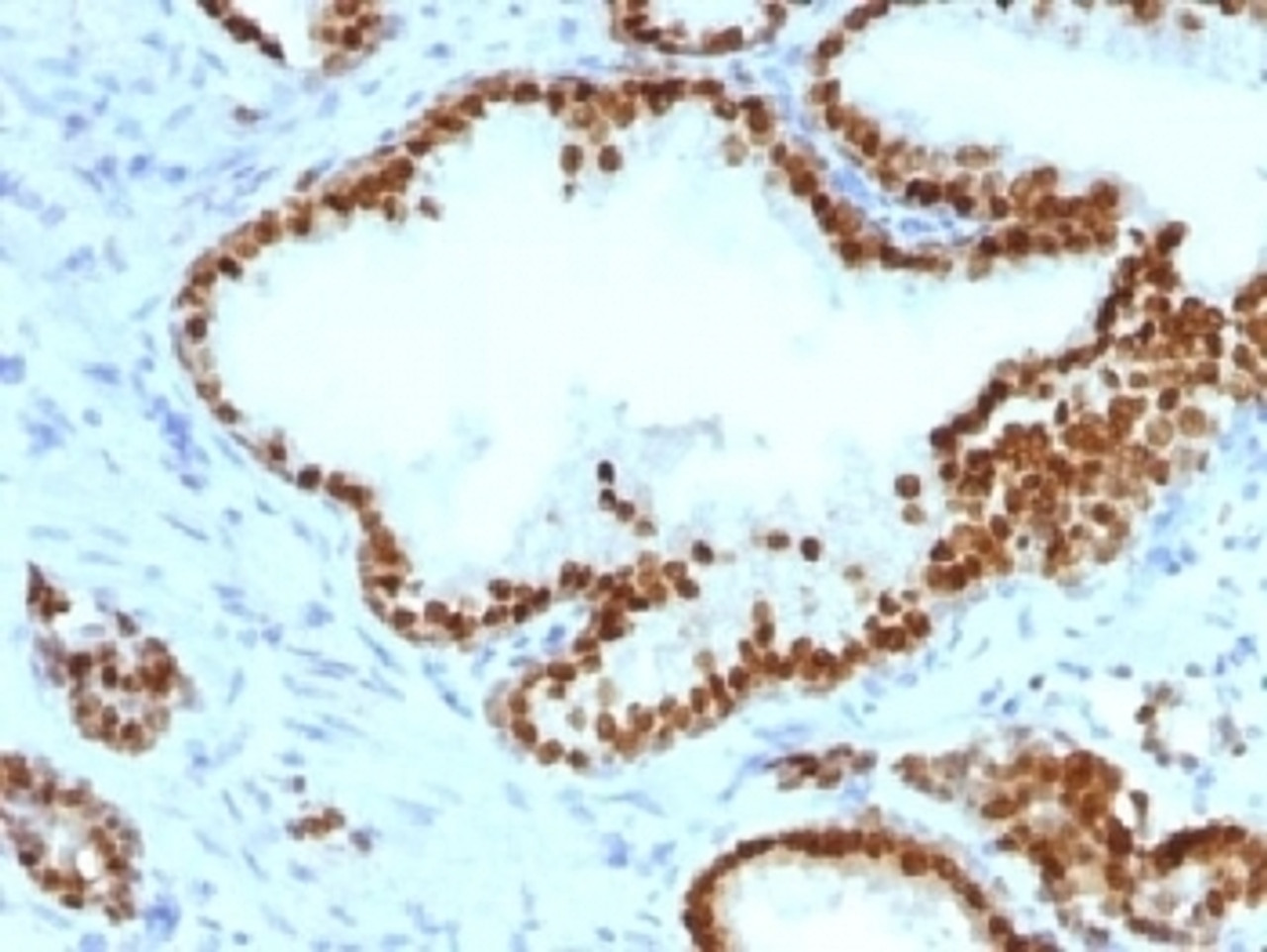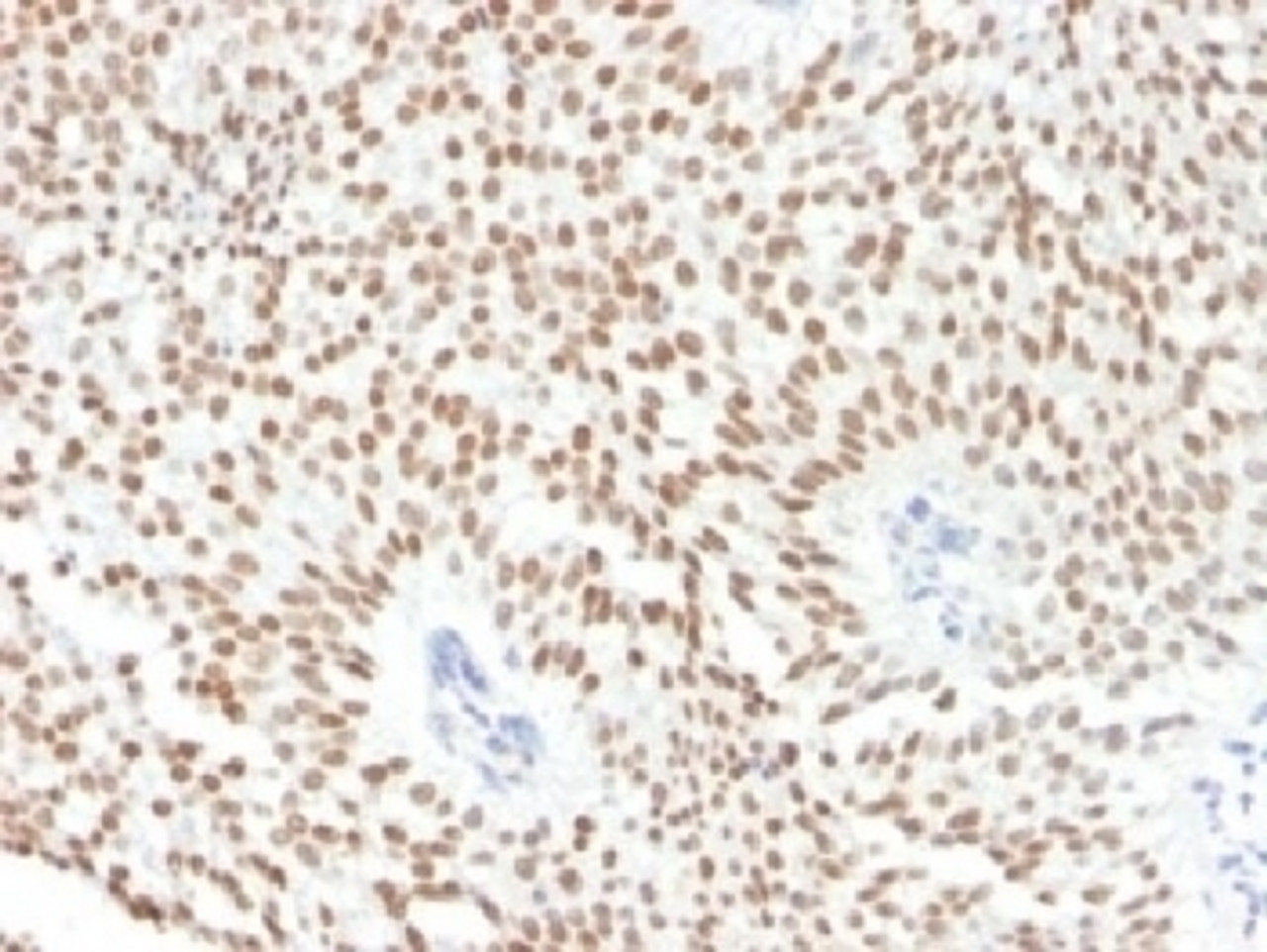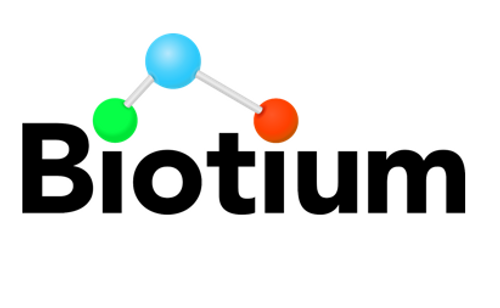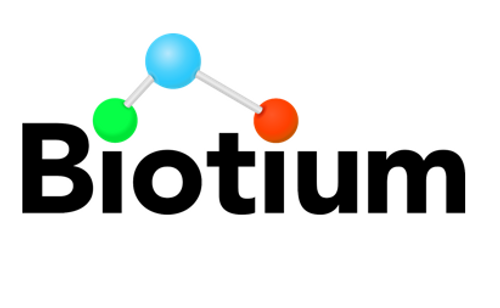Product Description
FOXA1 Antibody [FOXA1/1241] | 33-798 | ProSci
Host: Mouse
Reactivity: Human, Rat
Homology: N/A
Immunogen: A human recombinant partial protein corresponding to amin acids 372-472 was used as the immunogen for this FOXA1 antibody.
Research Area: Stem Cell
Tested Application: Flow, IHC-P, IF, WB
Application: Flow Cytometry: 0.5-1ug/10^6 cells
IF: 0.5-1 ug/ml
WB: 0.5-1 ug/ml
IHC (FFPE) : 0.5-1 ug/ml for 30 min at RT
The concentration stated for each application is a general starting point. Variations in protocols, secondaries and substrates may require the FOXA1 antibody to be titered up or down for optimal performance.
Specificiy: N/A
Positive Control 1: N/A
Positive Control 2: N/A
Positive Control 3: N/A
Positive Control 4: N/A
Positive Control 5: N/A
Positive Control 6: N/A
Molecular Weight: N/A
Validation: N/A
Isoform: N/A
Purification: Protein G affinity chromatography
Clonality: Monoclonal
Clone: FOXA1/1241
Isotype: IgG2b, kappa
Conjugate: Unconjugated
Physical State: Liquid
Buffer: PBS with 0.1 mg/ml BSA and 0.05% sodium azide
Concentration: 0.2 mg/mL
Storage Condition: Aliquot and Store at 2-8˚C. Avoid freez-thaw cycles.
Alternate Name: FOXA1 Antibody: HNF3A, TCF3A, HNF3A, Hepatocyte nuclear factor 3-alpha, Forkhead box protein A1, HNF-3-alpha
User Note: Optimal dilutions for each application to be determined by the researcher
BACKGROUND: The transcription factor Forkhead-box A1, also known as hepatocyte nuclear factor 3-alpha, is a member of the FOX class of transcription factors. HNF-1 (alpha and beta) , HNF-3 (alpha, beta and gamma) , HNF-4 (alpha and gamma) , and HNF-6 compose, in part, a homeoprotein family designated the hepatocyte nuclear factor family. The various HNF-1 isoforms regulate transcription of genes in the liver as well as in other tissues such as kidney, small intestine and thymus. FOXA1 is expressed in normal breast ductal epithelium and other epithelium in different organs, such as lung, pancreas, bladder, prostate, and colon. Recently, FOXA1 has been shown to be a major determinant of estrogen-ER activity and endocrine response in breast cancer cells. Its expression correlates with estrogen receptor (ER) -positivity, especially in luminal subtype A breast cancers, which is associated with favorable prognosis. FOXA1 is useful in the sub-classification of breast carcinomas.
 Euro
Euro
 USD
USD
 British Pound
British Pound
 NULL
NULL

![FOXA1 Antibody [FOXA1/1241] FOXA1 Antibody [FOXA1/1241]](https://cdn11.bigcommerce.com/s-452hpg8iuh/images/stencil/1280x1280/products/575602/812567/porsci_lo__79508.1648973713__67124.1649091979.png?c=2)


![FOXA1 Antibody [FOXA1/1241] FOXA1 Antibody [FOXA1/1241]](https://cdn11.bigcommerce.com/s-452hpg8iuh/images/stencil/100x100/products/575602/812567/porsci_lo__79508.1648973713__67124.1649091979.png?c=2)


![FOXA1 Antibody [FOXA1/1241] FOXA1 Antibody [FOXA1/1241]](https://cdn11.bigcommerce.com/s-452hpg8iuh/images/stencil/500x659/products/575602/812567/porsci_lo__79508.1648973713__67124.1649091979.png?c=2)


![FOXA1 Antibody [FOXA1/1514] FOXA1 Antibody [FOXA1/1514]](https://cdn11.bigcommerce.com/s-452hpg8iuh/images/stencil/500x659/products/575480/812257/porsci_lo__79508.1648973713__04946.1649091939.png?c=2)
![FOXA1 Antibody [FOXA1/1518] FOXA1 Antibody [FOXA1/1518]](https://cdn11.bigcommerce.com/s-452hpg8iuh/images/stencil/500x659/products/575543/812409/porsci_lo__79508.1648973713__92977.1649091959.png?c=2)
![FOXA1 Antibody [FOXA1/1515] FOXA1 Antibody [FOXA1/1515]](https://cdn11.bigcommerce.com/s-452hpg8iuh/images/stencil/500x659/products/575516/812341/porsci_lo__79508.1648973713__50659.1649091950.png?c=2)